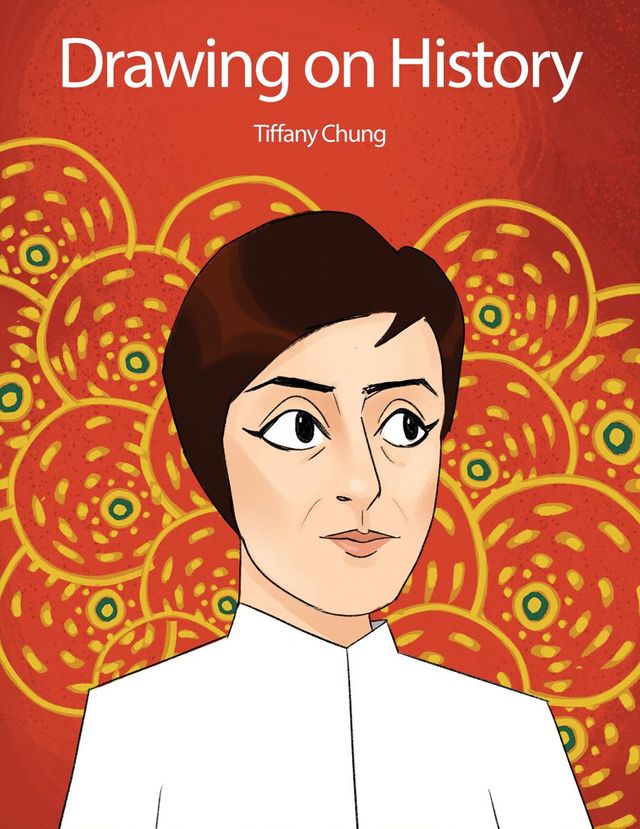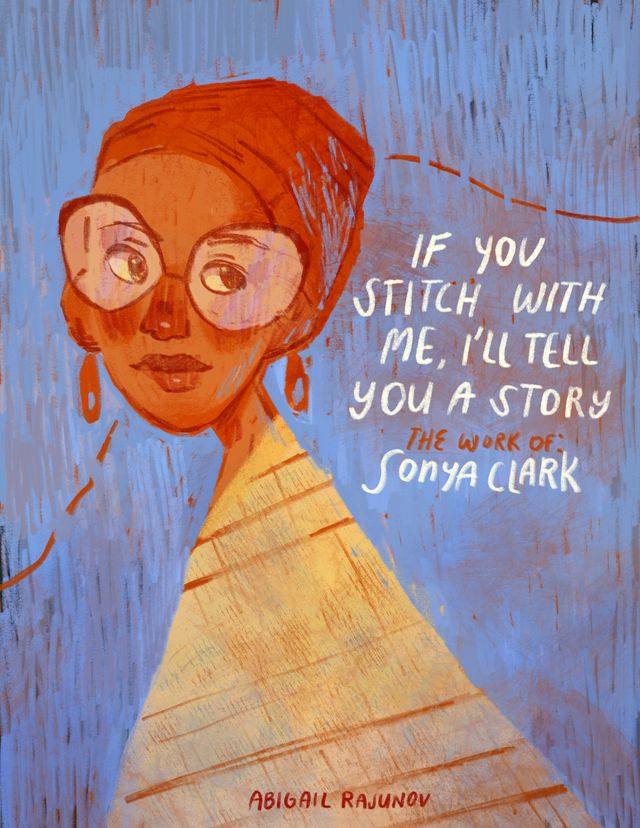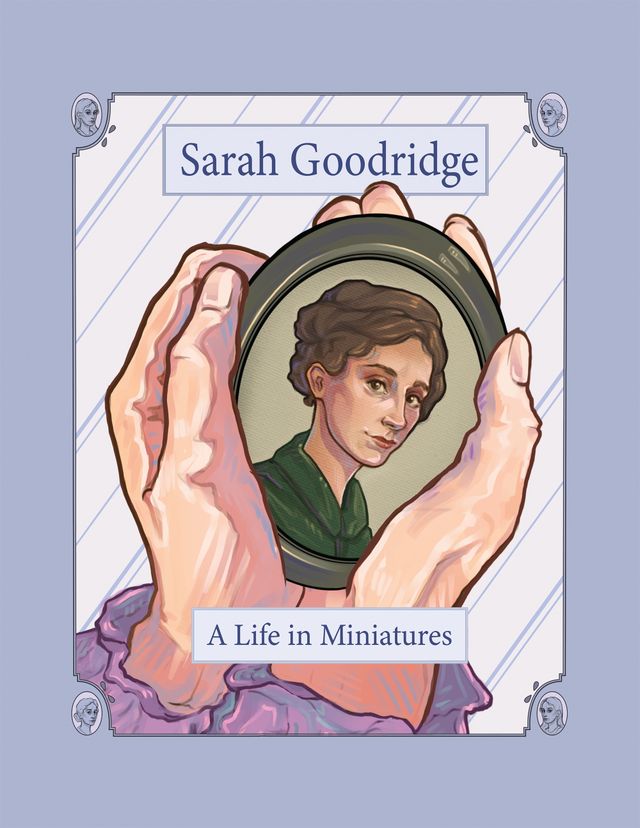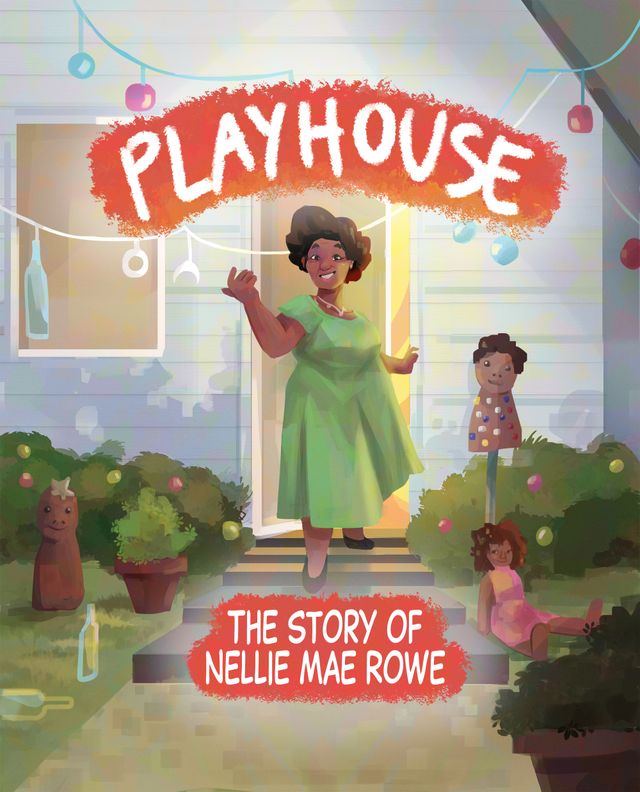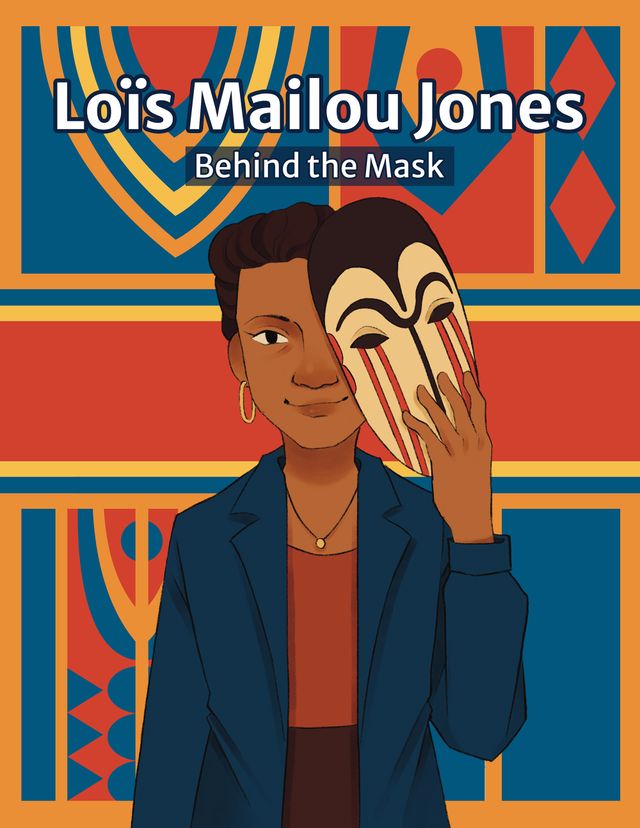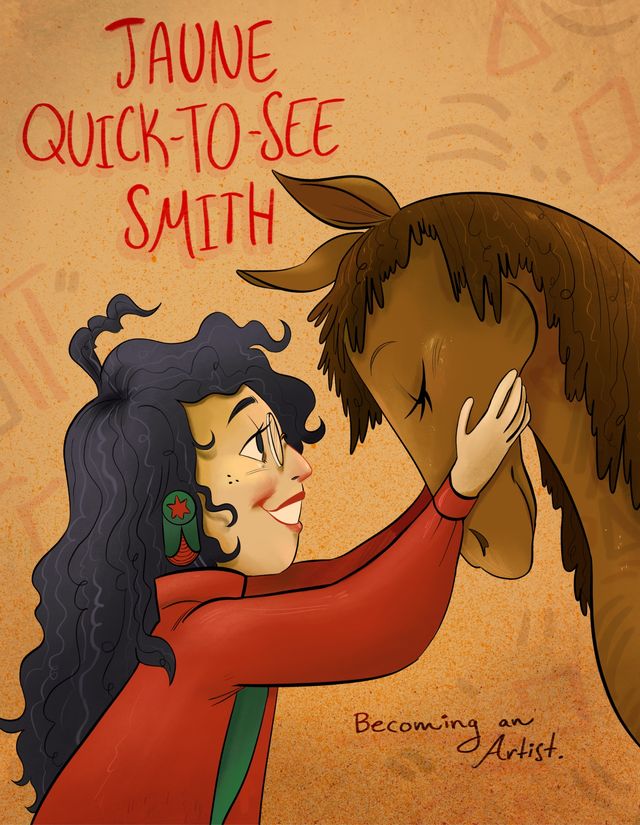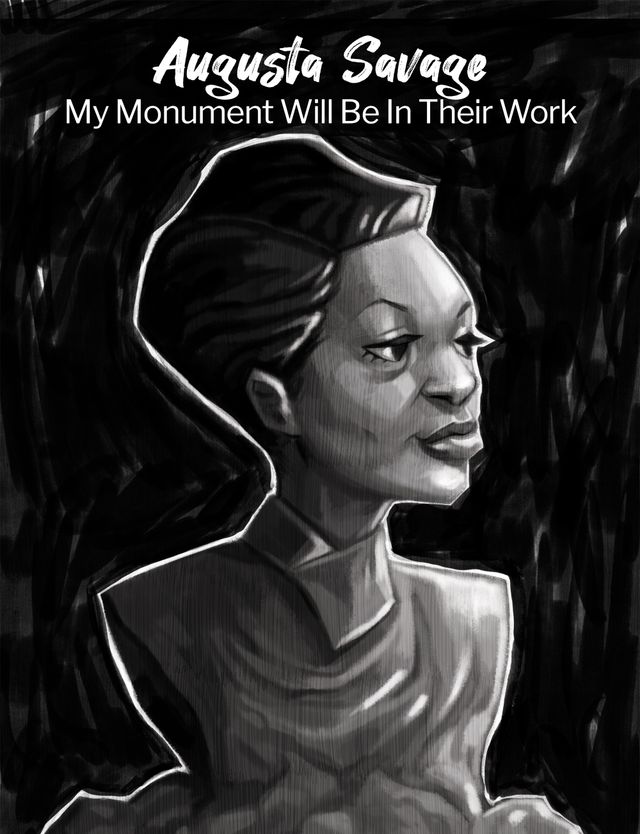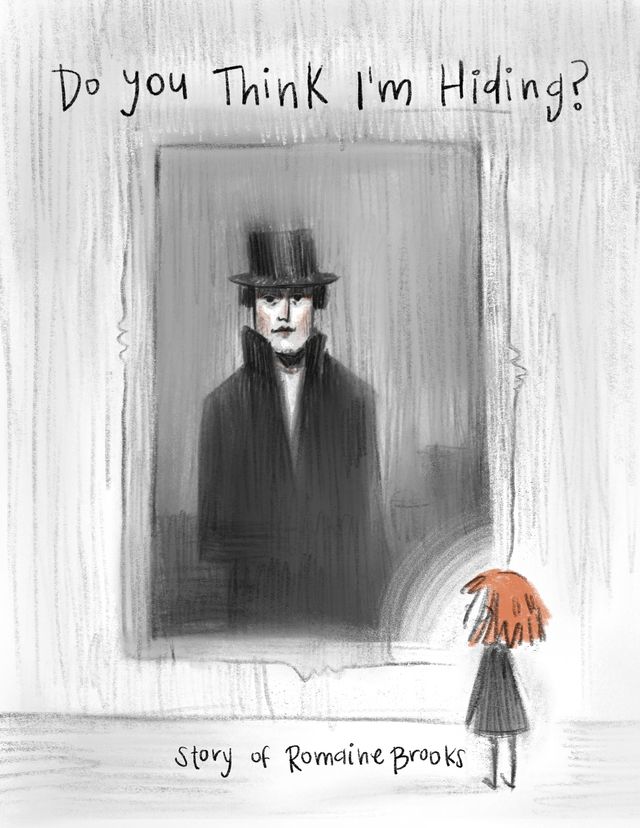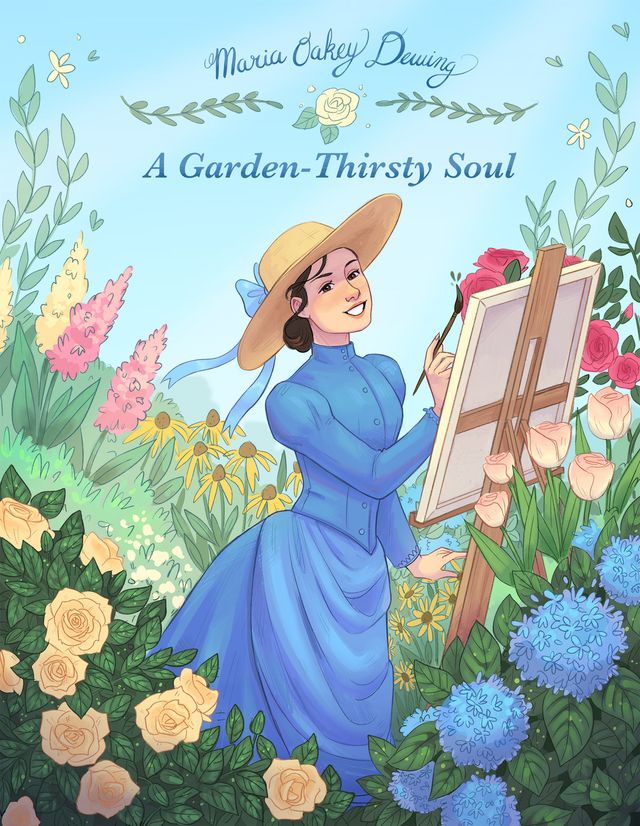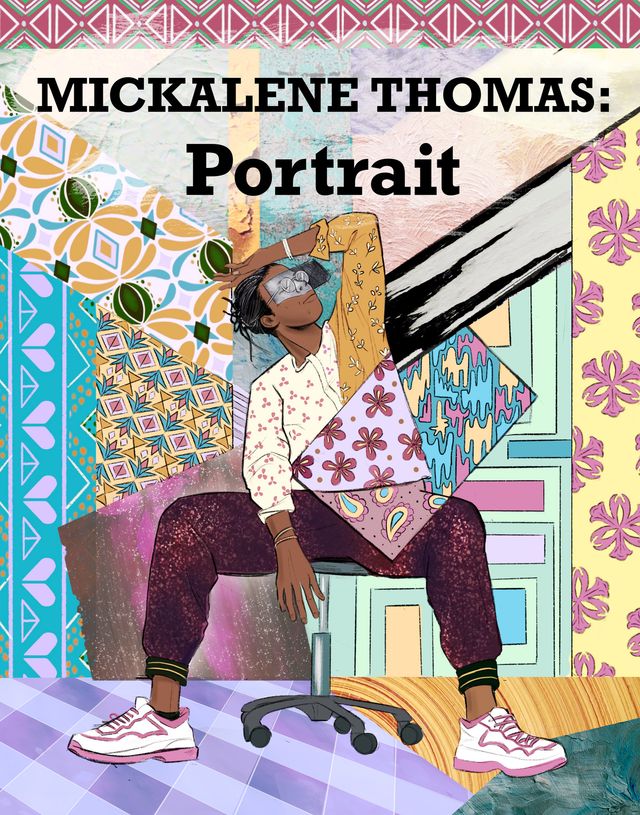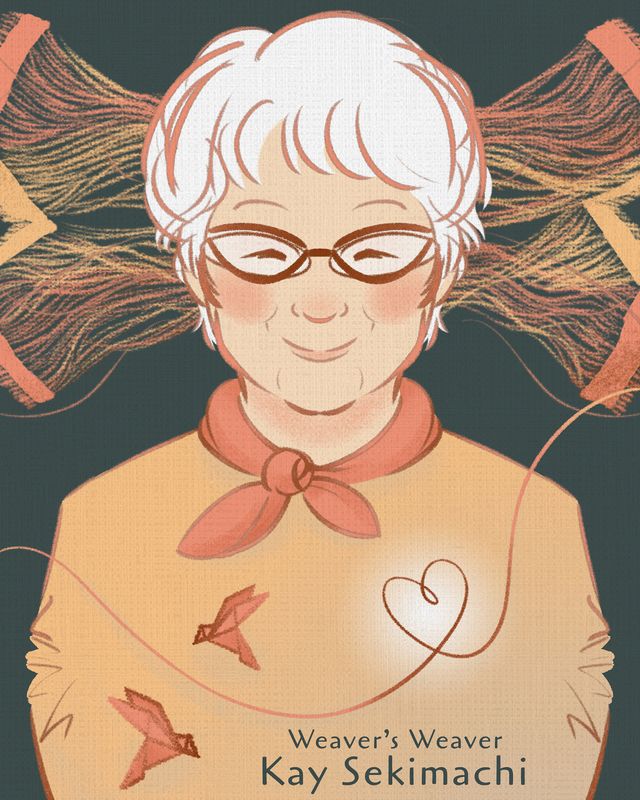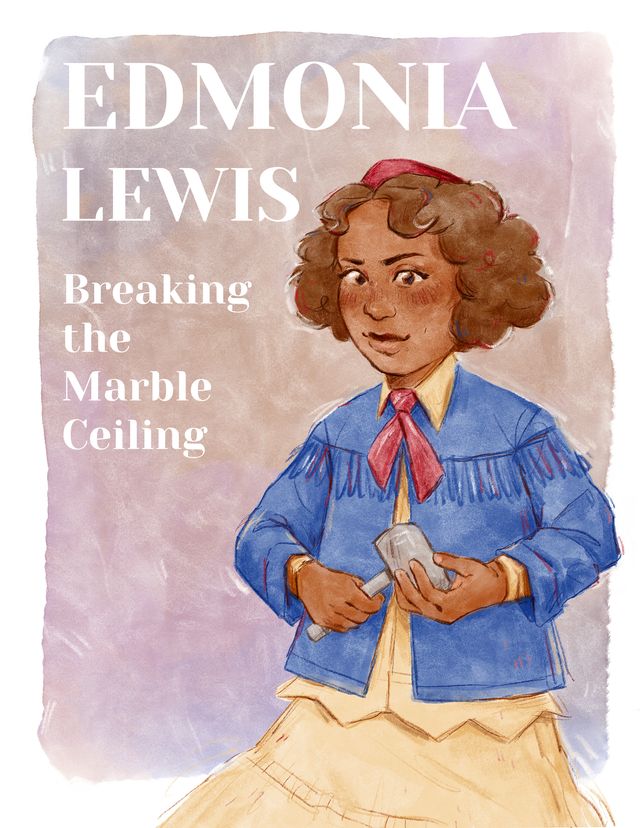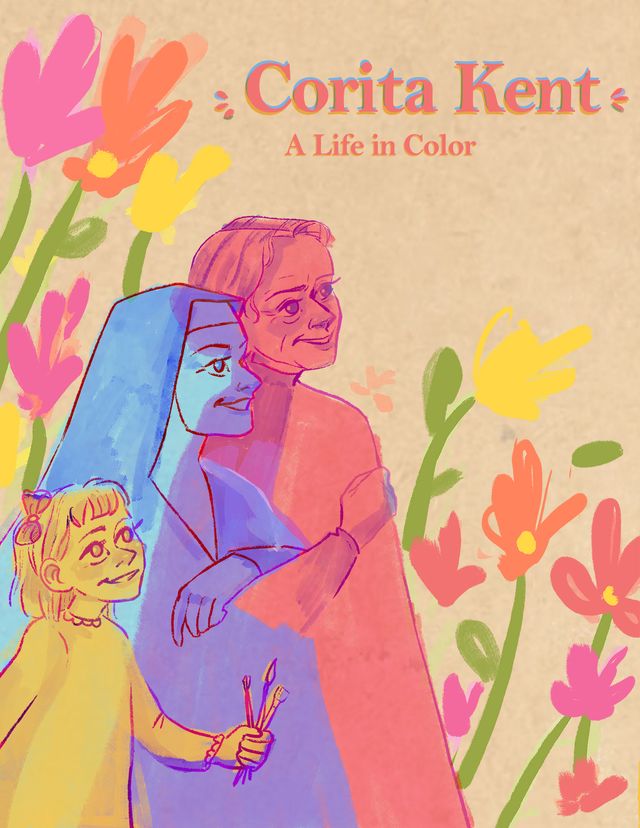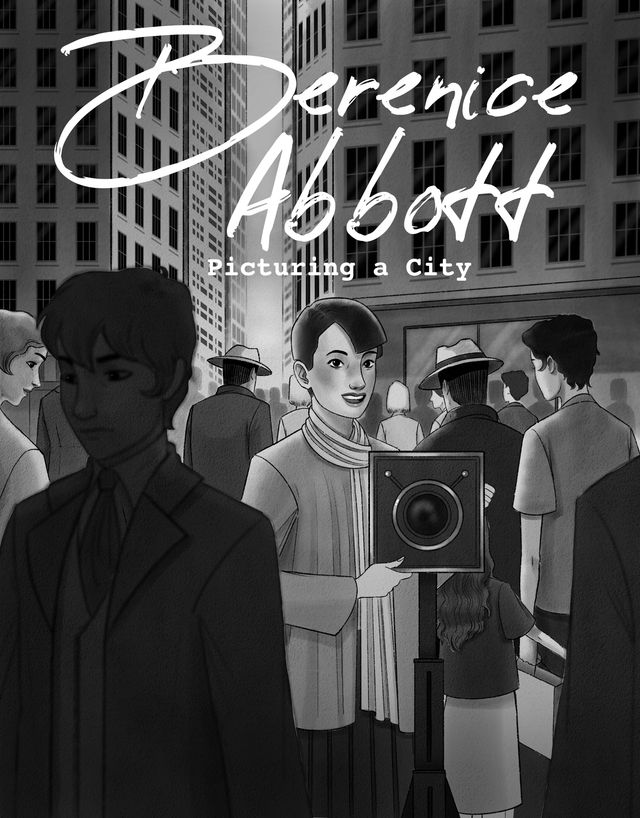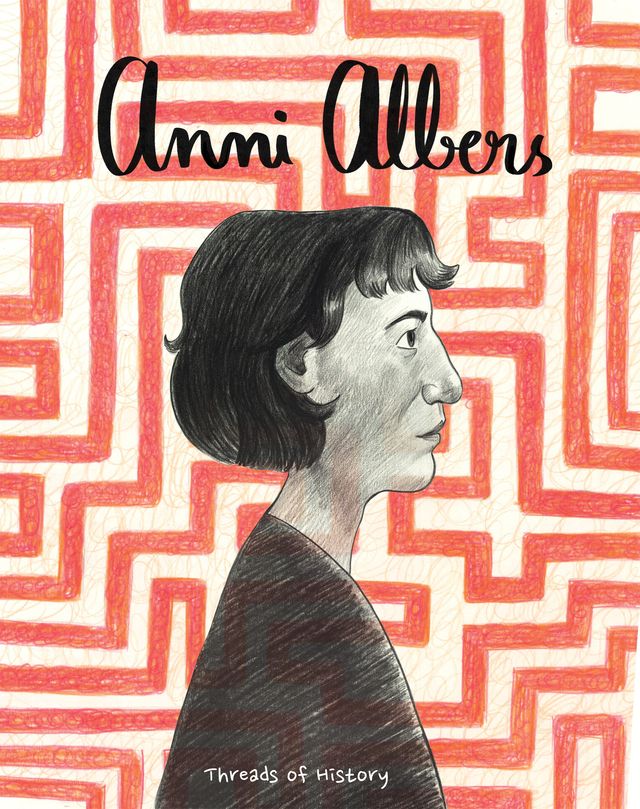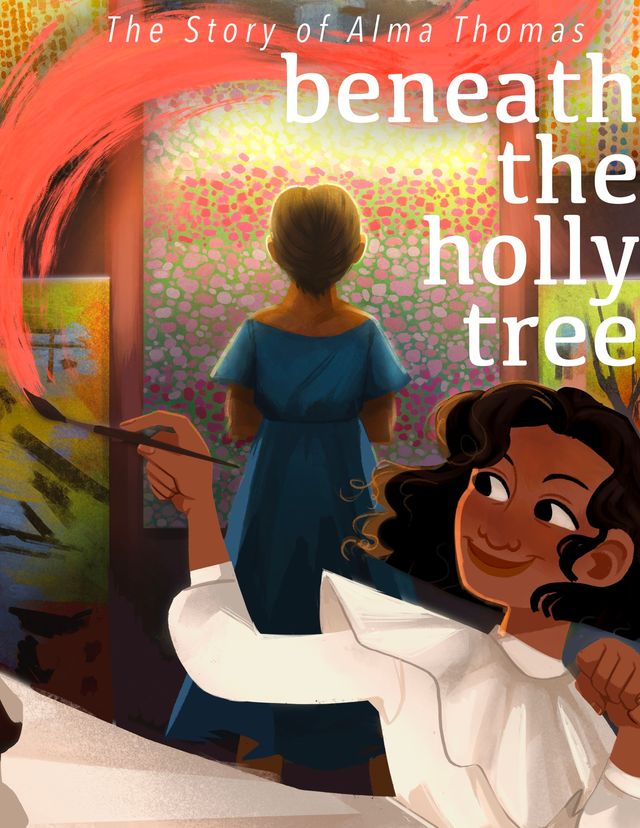An Overview
Miriam Schapiro was a groundbreaking feminist artist whose collaborative project, Womanhouse, critiqued the misogyny of everyday life.
This comic is part of a series Drawn to Art: Tales of Inspiring Women Artists that illuminates the stories of women artists in the collection of the Smithsonian American Art Museum. Inspired by graphic novels, these short takes on artists’ lives were each drawn by a student-illustrator from the Ringling College of Art and Design.
We invite you to read the comic and share it with your friends and young people in your life.

Cover
A middle-aged woman with a light skin tone and rosy cheeks stands in the middle of the page. She has brown and gray streaked curly shoulder-length hair and brown eyes. She is wearing a coral collared overcoat patterned with yellow, green, and white flowers over a yellow scarf and large pearl earrings. She has her arms crossed, cradling a group of small houses. The houses are yellow, blue, and red, with orange doors and red roofs. There are leaves and trees peeking out from behind the houses. Behind the woman, there are bright pink and red flowers and green leaves fanning out behind her shoulders. The background is a light teal color that gets darker toward the bottom of the page. Across the woman’s arms white text reads: "Becoming Miriam Schapiro."
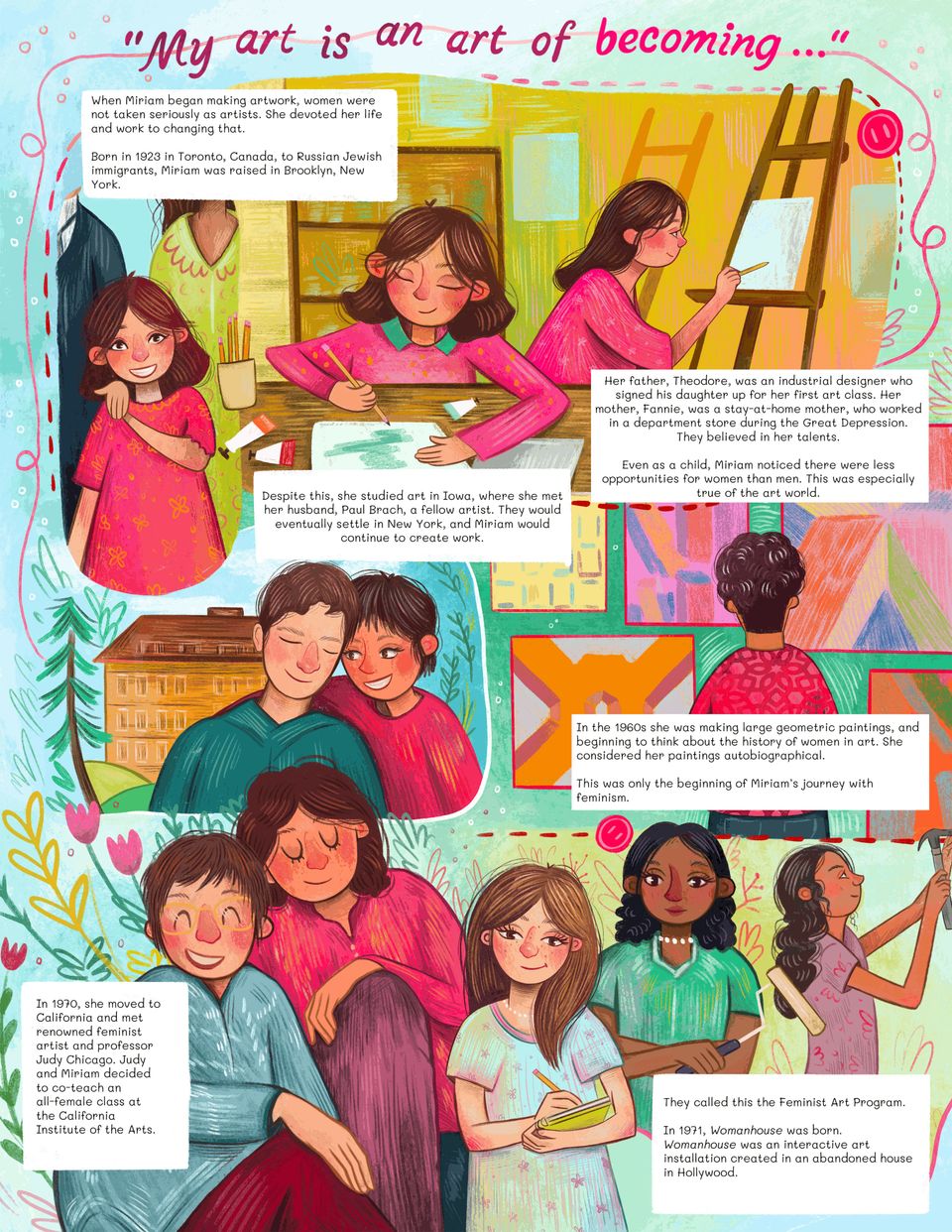
Page 1
Background: The page is broken into six loosely defined panels, each taking up about a sixth of the page. There are six white text boxes with black text. The background of the page is light teal, with a pink swirling line, pink stitching and pink buttons accenting the border. At the top of the page in dark pink hand-written font it says '"My art is an art of becoming..."'
Panel 1
A young girl with a light skin tone and shoulder-length brown hair is smiling in the middle of the panel. She is wearing a fuchsia T-shirt dress with light orange floral details. Behind her there are the bodies of two figures. On the left there is a figure in a dark blue suit and on her right, there is a figure in a long lime green dress, with long brown hair. The girl, a young Miriam Schapiro, is reaching her left arm up across her body to hold the hand of the figure in the suit. Text reads: "When Miriam began making artwork, women were not taken seriously as artists. She devoted her life and work to changing that. Born in 1923 in Toronto, Canada, to Russian Jewish Immigrants, Miriam was raised in Brooklyn New York."
Panel 2
In the forefront of this panel is Miriam as a young girl, with a light skin tone and shoulder-length brown hair. She is wearing a long-sleeved pink dress with a green collared shirt underneath. She is sitting at a wooden table drawing on a piece of white and green paper and is surrounded by paint tubes. Behind her is a yellow room with a brown bookshelf and light teal windows. Next to this young version of Miriam is a slightly older version of Miriam. She is wearing a short-sleeved pink dress and has longer brown hair. She is sketching on a white canvas propped against a wooden easel. Text reads: "Her father, Theodore, was an industrial designer who signed his daughter up for her first art class. Her mother, Fannie, was a stay-at-home mother, who worked in a department store during the Great Depression. They believed in her talents. Even as a child, Miriam noticed there were less opportunities for women than men. This was especially true of the art world."
Panel 3
Miriam is wearing a pink sweater and has very short brown hair. She is hugging a man next to her right, looking at him smiling. The man has a light skin tone and short medium brown hair and is wearing a dark teal sweater. He is smiling with his eyes closed. Behind them is a light brown building with a brown roof and lots of windows. The building is sitting on a green hill with a pine tree next to it. Text reads: "Despite this, she studied art in Iowa, where she met her husband, Paul Brach, a fellow artist. They would eventually settle in New York, and Miriam would continue to create work.”
Panel 4
A woman with short curly brown hair, a pink sweater with dark pink floral details, and blue jeans has her back to the viewer, while she looks at five colorful geometric works of art, floating on a green background. The artworks were all created by Miriam. Text reads: “In the 1960s, she was making large geometric paintings, and beginning to think about the history of women in art. She considered her paintings autobiographical. This was only the beginning of Miriam’s journey with feminism."
Panel 5
Two women sit leaning against each other with pink, red, and yellow flowers popping out behind them. The woman on the right is a middle-aged Miriam, wearing a pink long-sleeve shirt and dark blue pants. She has shoulder length brown hair, and she is smiling with her eyes closed. Her left hand is placed on the bent knee of the person to her right. This woman has a light skin tone, cropped straight brown hair, and yellow glasses. She is wearing a blue long-sleeve shirt and maroon pants and has a wide smile. Text reads: "In 1970, she moved to California and met renowned feminist artist and professor Judy Chicago. Judy and Miriam decided to co-teach an all-female class at the California Institute of the Arts."
Panel 6
Three young women stand against a light green and yellow background with pink floral sketches behind them. The woman on the left has a light skin tone, long light brown hair, and is wearing a light blue t-shirt dress with a lavender star pattern and lavender collar. She is writing in a lime green notebook, looking toward the viewer. To her left is a woman with a dark skin tone and curly shoulder-length dark brown hair. She is wearing a green collared shirt and white pearl necklace. She has her arms crossed and is holding a paint roller in her right hand. She is also looking at the viewer. To her right is the third woman, with a medium skin tone, and long curly brown hair. She is wearing a lavender t-shirt with a red floral pattern and is facing to the right of the panel. In her right hand she is holding a hammer and in her left hand she is holding a nail up against the border of the page, in the process of hammering. Text reads: "They called this the Feminist Art Program. In 1971, Womanhouse was born. Womanhouse was an interactive art installation created in an abandoned house in Hollywood."

Page 2
Background: This page is broken up into 5 loosely defined panels, three images make up the first panel at the top, one on the middle right, one on the middle left, and one on the bottom left and bottom right of the page. There are five white text boxes with black text. The background is pale pink with a dark pink and green watercolor effect. The same pink stitching, loose thread, and buttons are scattered as accents between the panels.
Panel 1
This panel is made up of three smaller illustrations.
A small orange house sits between dark green and light green bushes and trees. Pink and green vines crop up among the greenery. The house has a pointed brown roof, two pink windows, and a pale pink door. Across the middle top of the house text reads: "Womanhouse."
Three women stand with their backs to the viewer. The woman on the left has shoulder length golden brown hair and a light skin tone. She is wearing an orange long-sleeve shirt with a pink floral pattern and is holding a hammer up with her left hand. Next to her on the right is a woman with long blonde hair wearing an orange long-sleeve shirt. To her right is the third woman, with shoulder-length brown hair and a light skin tone. She is wearing a teal striped long-sleeve shirt and is pointing her right hand up to the sky. The background is yellow and orange watercolor with yellow speckles. Under panels 1 and 2, text reads: "Miriam, Judy, and their students worked for months transforming the rooms into exhibits. They wanted to challenge sexist stereotypes and make art out of their own experiences and inner lives. 'Womanhouse was conceived of as a house of the dreams and fantasies of women. With no man to act as censor, what could a woman do in her house?'"
A woman with a medium skin tone and chin-length brown hair stands smiling with her eyes closed at the viewer. She is wearing a light blue, yellow, and pink tie-dyed shirt with a triangular pink stripped pattern and a red skirt. She has her hands on her hips, resting on a yellow work belt with three pockets. Behind her the background is red with colorful floral sketches peeking from behind her.
Panel 2
A hand with a light skin tone pops out of the middle-left side of the page. The hand is holding a miniature lamp, with a brown base and yellow lamp shade, between its thumb and pointer finger. Behind the hand are pink and orange buttons and pink thread looping between the buttons. Text to the right of the hand reads: "Dollhouse was one of the pieces in Womanhouse. Created by Miriam and Sherry Brody, it was a miniature version of the larger house, with small rooms and figurines. It playfully subverted the roles imposed on women - as wives, homemakers, lovers - depicting each room as a different aspect of female identity."
Panel 3
A middle-aged Miriam sits at a wooden table sketching. She has cropped curly brown hair and is wearing a dark green shirt with white ruffles on the sleeves and large gold earrings. Her left arm is leaning on the table and her right hand is holding a pencil. She looks down at the table at what she is drawing. Behind her is a white sewing machine with red yarn and green thread on top of it. Next to the machine is a yellow cup with pencils in it. Text reads: "Womanhouse was the beginning of Miriam’s push to create work different from what the male-dominated art world valued at the time."
Panel 4
A pair of hands with a light skin tone pop out of the left side of the page underneath the hand from panel 4. The two hands below are holding a light green fabric with a white grid. The right hand is holding a sewing needle with pink thread that is about to pierce the fabric. A spool of pink thread and a blue and green button sit to the right of the hands. Text reads: "Miriam began making what she called femmages, or female collages, made of craft materials associated with women, including scraps of fabric, buttons, and lace."
Panel 5
Four young women stand in a line facing the viewer against a pink watercolor background with green floral details. All the women are looking down at the piece of art the woman on the left is holding. The woman on the left has a medium skin tone and short curly brown hair. She is wearing a light-blue V-neck shirt and is holding a yellow and green canvas in front of her with her right hand. She has her mouth open, and her left hand is behind the woman to the right of her. This woman has a light skin tone and golden-brown hair pulled into a bun. She is wearing a red and orange striped T-shirt and black pants. She is holding a yellow and pink canvas in front of her with her right hand and is gesturing to it with her left hand. To her right is a woman with medium skin tone and long curly brown hair. She is sitting on a stool and leaning her head on her left hand. She is wearing a lime green T-shirt and jeans. To the right of her is the fourth woman, who has a light skin tone and blonde shoulder-length hair. She is also sitting on a stool, with her left leg resting on the stool bar and her left arm resting on her knee. She is wearing a pink t-shirt with a triangular striped pattern, dark blue pants, and yellow sneakers. Text reads: "In 1979 she cofounded the New York Feminist Art Institute. She was also committed to including female artists in textbooks and history lessons."

Page 3
This page is one large illustration with one white text box with black text. The background of the illustration is a light blue and coral watercolor gradient. There are light and dark green leaves and vines emerging from the upper right-hand corner and along the right side of the page. Pink flowers with yellow centers and red berries pop up throughout the greenery. A bunch of red flowers with green stems pops up out of the bottom left corner, overlapping with Miriam's right shoulder. The illustration shows the side profile of four women standing in a line next to each other all facing the right of the page. A middle-aged depiction of Miriam, with short curly brown hair, is the first person, all the way to the left of the page. She is wearing a pink striped top and large gold floral earrings. To the right of her is a young woman with a dark skin tone and black hair. She is wearing a green turtle-neck top with a dark green triangular pattern. To her right is a young woman with a medium skin tone and dark brown hair pulled back. She is wearing a striped, yellow top. To the right of her is the fourth woman, who has a medium skin tone and black curly hair pulled back. She is wearing an orange shirt with a red floral pattern. Pink stitching outlines the four women. Text reads: "Miriam is remembered not only as a leading artist of the time, but as a pioneer for women in the arts. 'I was trained to be an artist by men, but I learned how to express myself from women.'"
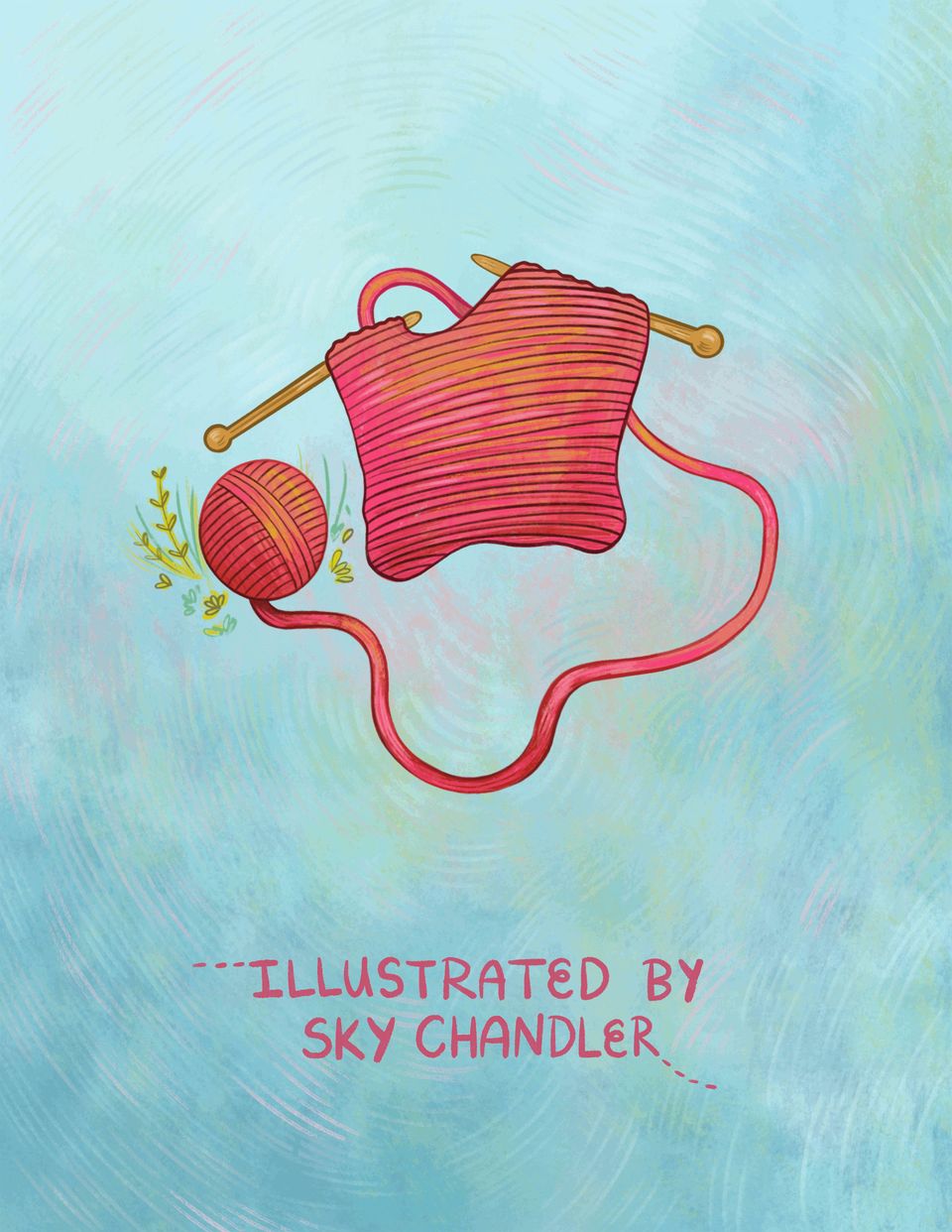
End page
Wooden knitting needles holding a piece of pink and orange knitting sit in the center of the page. The ball of yarn sits in a patch of light green grass to the left of the knitting with its thread looping up to the needles. The background is light blue with faint green and pink swirls surrounding the center illustration. Text at the bottom of the page reads: "Illustrated by Sky Chandler."














